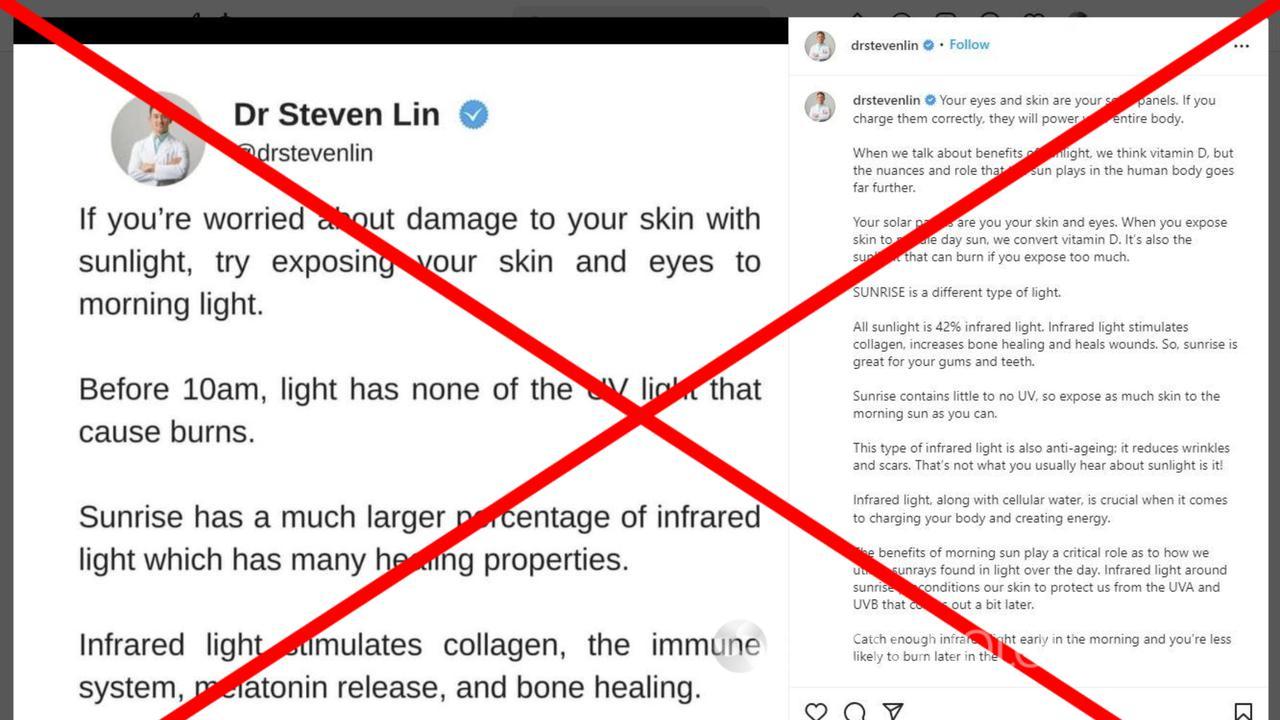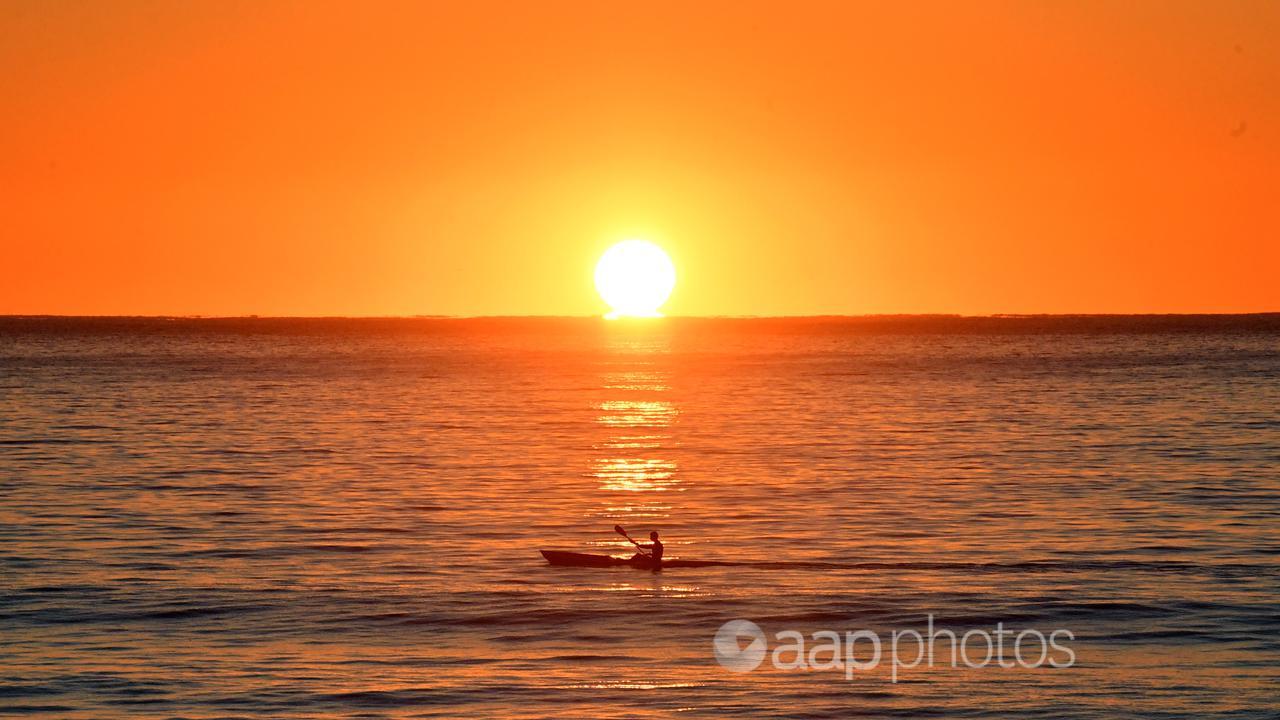With among the highest rates of skin cancer in the world, Australians are well-versed in sun safety.
But a Sydney-trained dentist is now telling his 226,000 followers that prior to 10am the sunlight cannot cause burns.
The claim is false. Experts say people can get burnt at any time of the day depending on a number of factors including location and skin type.
Dr Steven Lin made the claim in an Instagram post (screenshot here) on July 10, telling his almost a quarter of a million followers: “Before 10am, light has none of the UV light that cause burns”.
Dr Lin is a dentist and author who, according to New Zealand’s Your Dentist website, studied biomedical science at the University of Wollongong before completing his dentistry qualifications at the University of Sydney. He also has a large following in the United States.
AAP FactCheck received no response to a request for evidence to back up his claim.
Globally, the risk of sunburn is measured by ultraviolet (UV) radiation levels on a scale from 0 (low) to 11+ (extreme), as shown in the World Health Organization’s Global Solar UV Index.
Levels 0-2 mean it’s safe to be outside, 3-7 necessitates shade, clothing, sunscreen and a hat, while 8 and above means avoid being exposed to the sun at all.
In Australia, the UV “is always highest during the middle part of the day between 10am and 2pm (or 11am and 3pm daylight saving time)”, the SunSmart program says. The American Cancer Society says UV rays are strongest between 10am and 4pm in the US.

But skin cancer and radiation experts say the post is wrong to say light before 10am has none of the UV radiation that causes burns, and people can get sunburnt before then.
Anne Cust, a cancer epidemiologist at the University of Sydney, told AAP FactCheck the Instagram post’s claim is incorrect.
“The susceptibility to burn depends on the UV level (which varies by time of year, time of day and where you live), as well as skin type and how long you spend in the sun,” Professor Cust said in an email.
“In many parts of Australia it is possible to burn before 10am, especially in spring and summer.”
Stuart Henderson, from the Australian Radiation Protection and Nuclear Safety Agency (ARPANSA), says sunlight at any time of the day contains radiation.
“There will be a smaller proportion of the incoming radiation early and late in the day compared to around solar noon (middle of the day), but UV will still be present in sunlight,” Dr Henderson told AAP FactCheck in an email.
“ARPANSA recommends that sun protection is used whenever the UV index reaches 3 or above. In Australia, this level is often reached before 10am in the morning, particularly in the summer months.”
Veronica Shi, an assistant professor of dermatology at UC San Diego Health, told AAP FactCheck 10am is “too broad of a blanket statement to apply to any geographic location”.
Dr Shi added: “What might be more helpful is to use the UV index which is a measure of UV radiation at any given time of day in a given location.
“It is true that the UV index is lower (in the safe range of 0-2) just around sunrise, but the exact index will be completely dependent on time of year, elevation, location, and exact time of day.
“There are certainly geographic locations where the UV index could be high enough to cause damage in the mornings.”
The American Cancer Society says other factors which influence the strength of the sun’s UV rays beside the time of day and season include the distance from the equator, altitude, cloud cover, and reflection off surfaces.
Experts state Australia’s high skin cancer rates are due to a number of factors. Many Australians, through migration, have the wrong type of skin for their environment. A relative lack of pollution and the earth’s eliptical orbit around the sun also both make Australia particularly dangerous.
The Verdict
The claim there is no harmful UV sunlight before 10am is false. While UV radiation is higher in the middle of the day, experts say people can still get sunburn before 10am. They say many factors influence how much UV radiation a person will be exposed to, urging people to always check the UV index level.
False – The claim is inaccurate.
* AAP FactCheck is an accredited member of the International Fact-Checking Network. To keep up with our latest fact checks, follow us on Facebook, Twitter and Instagram.
All information, text and images included on the AAP Websites is for personal use only and may not be re-written, copied, re-sold or re-distributed, framed, linked, shared onto social media or otherwise used whether for compensation of any kind or not, unless you have the prior written permission of AAP. For more information, please refer to our standard terms and conditions.


















